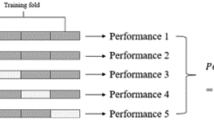Abstract
Risk decision-making in natural hazards encompasses a plethora of environmental, socio-economic and management-related factors, and benefits greatly from exploring possible patterns and relations among these multivariate factors. Artificial neural networks, capable of general pattern classifications, are potentially well suited for risk decision support in natural hazards. This paper reports an example that assesses the risk patterns or probabilities of house survival from bushfires using artificial neural networks, with a simulation data set based on the empirical study by Wilson and Ferguson (Predicting the probability of house survival during bushfires, Journal of Environmental Management 23 (1986) 259–270). The aim of this study was to re-model and predict the relationship between risk patterns of house survival and a series of independent variables. Various configurations for input and output variables were tested using neural networks. An approach for converting linguistic terms into crisp numbers was used to incorporate linguistic variables into the quantitative neural network analysis. After a series of tests, results show that neural networks are capable of predicting risk patterns under all tested configurations of input and output variables, with a great deal of flexibility. Risk-based mathematical functions, be they linear or non-linear, can be re-modelled using neural networks. Finally, the paper concludes that the artificial neural networks serve as a promising risk decision support tool in natural hazards.
Similar content being viewed by others
References
K. Chen, R. Blong and C. Jacobson, MCE-RISK: integrating multicri-teria evaluation and GIS for risk decision-making in natural hazards, Environmental Modelling and Software 16 (2001) 387–397.
S.J. Chen and C.L. Hwang, Fuzzy Multiple Attribute Decision Making (Springer, Berlin, 1992).
D. Civco, Artificial neural networks for land cover classification and mapping, International Journal of Geographical Information Systems 7 (1993) 173–186.
R.H. Gimblett, G.L. Ball and A.W. Guisse, Autonomous rule gener-ation and assessment for complex spatial modeling, Landscape and Urban Planning 30 (1994) 13–26.
M.T. Hagan, H.B. Demuth and M. Beale, Neural Network Design (PWS Publishing Company, Boston, 1996).
B.C. Hewitson and R.G. Crane, Neural Nets: Applications in Geog-raphy (Kluwer Academic Publishers, Dordrecht, 1994).
C.L. Hwang and K.P. Yoon, Multiple attribute decision making: meth-ods and applications, Lecture Notes in Economics and Mathematical Systems (186) (Springer, New York, 1981).
J.R. Jang, C.T. Sun and E. Mizutani, Neuro-Fuzzy and Soft Comput-ing: A Computational Approach to Learning and Machine Intelli-gence (Prentice Hall, Englewood Cliffs, NJ, 1997).
J.K. Lein, Mapping environmental carrying capacity using an artificial neural network: a first experiment, Land Degradation & Rehabilita-tion 6 (1995) 17–28.
J.K. Lein, Environmental Decision Making: An Information Technol-ogy Approach (Blackwell Science, Boston, 1997).
T. Masters, Neural, Novel & Hybrid Algorithms for Times Series Pre-diction (Wiley, New York, 1995).
S. Openshaw and C. Openshaw, Artificial Intelligence in Geography (Wiley, Chichester, 1997).
G.C. Ramsay, N.A. McArthur and V.P. Dowling, Building in a fire-prone environment: research on building survival in two major bush-fires, Proceedings of the Linnean Society of NSW 116 (1996) 133–140.
B.D. Ripley, Pattern Recognition and Neural Networks (Cambridge University Press, Cambridge, 1996).
A. Stassopoulou, M. Petrou and J. Kittler, Application of a Bayesian network in a GIS based decision making system, International Journal of Geographical Information Science 12 (1998) 23–45.
F. Wang, The use of artificial neural networks in a geographical infor-mation system for agricultural land-suitability assessment, Environ-ment and Planning A 26 (1994) 265–284.
A.A.G. Wilson and I.S. Ferguson, Fight or flee? - a case study of the Mount Macedon bushfire, Australian Forestry 47 (1984) 230–236.
A.A.G. Wilson and I.S. Ferguson, Predicting the probability of house survival during bushfires, Journal of Environmental Management 23 (1986) 259–270.
Y. Yin and X. Xu, Applying neural net technology for multi-objective land use planning, Journal of Environmental Management 32 (1991) 349–356.
Author information
Authors and Affiliations
Rights and permissions
About this article
Cite this article
Chen, K., Jacobson, C. & Blong, R. Artificial Neural Networks for Risk Decision Support in Natural Hazards: A Case Study of Assessing the Probability of House Survival from Bushfires. Environmental Modeling & Assessment 9, 189–199 (2004). https://doi.org/10.1023/B:ENMO.0000049389.16864.b0
Issue Date:
DOI: https://doi.org/10.1023/B:ENMO.0000049389.16864.b0




